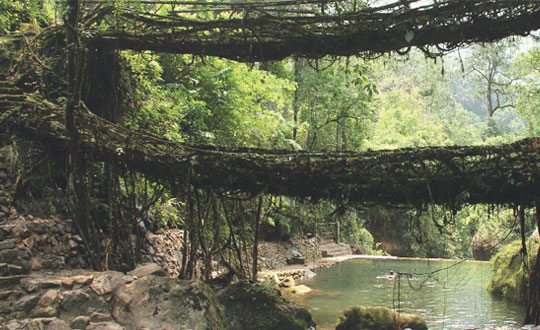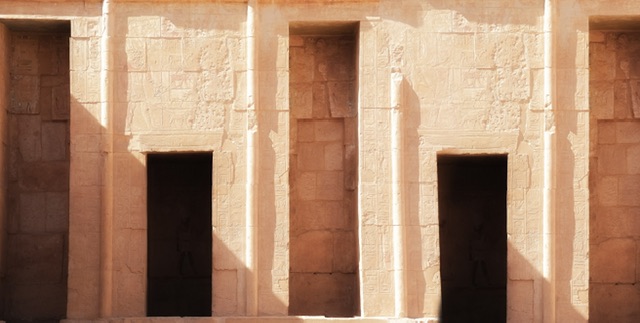India has to its credit many unparalleled natural and manmade wonders, be it the Ram Setu Bridge in Tamil Nadu, the Sunderbans in West Bengal, Chiktan Castle in Jammu and Kashmir, the Western Ghats or architectural wonders like the Taj Mahal. One such marvel can be found in the depths of north-eastern India, where bridges aren’t built, they’re grown. This wonder is the Living Root Bridges in Cherrapunji.
Cherrapunji, is a sub-divisional town in the East Khasi Hills district in the state of Meghalaya. It is credited as being one of the wettest place on earth and so it boasts of green jungles, tallest Indian plunge waterfalls and some of the most stunning and rarest wonders – the Living Bridges. These unique natural-manmade marvels can only be found in the hidden valleys where rain tumbles down almost every day throughout the year. The well-known valleys being Mawlynnong, Nongriat and Wahthyllong. The earliest written record of Cherrapunji’s living root bridges is by Lieutenant H Yule, who expressed astonishment about them in the 1844 Journal of the Asiatic Society of Bengal.
The Living Root Bridges of Cherrapunji, are tangles of massive thick roots, which have been intermingled over the years to form bridges. The bridges are handmade from the aerial roots of living banyan fig trees, such as Ficus Elastica. The Ficus Elastica produces multiple secondary roots from its trunk which can easily perch atop huge boulders along the riverbanks, or even in the middle of the rivers to form bridges.
The War-Khasis, a tribe in Meghalaya, noticed this tree and saw in its powerful roots, an opportunity to easily cross the area’s rivers. Whenever and wherever the need arose, they simply grew their bridges. In order to make a rubber tree’s roots grow in the right direction- the Khasis use betel nut trunks, sliced down the middle and hollowed out, to create root-guidance systems. The thin, tender roots of the rubber tree, prevented from fanning out by the betel nut trunks, grow straight out. When they reach the other side of the river, they’re allowed to take root in the soil. Some of these root bridges are made by entwining the roots of two trees planted on opposite banks or in the middle of the river on huge boulders. The root bridges take ten to fifteen years to become fully functional and they’re extraordinarily strong. These bridges usually have base spans numbering more than two. There are also two protective railing spans. Stones are used to fill any gap in the base spans and over time they get embedded in the floor of the root bridge. Since they are alive and still growing, the bridges keep gaining strength over time. Some of the bridges are over a hundred feet long. They can support the weight of 50 or more people at a time and may be well over 500 years old. One special root bridge, believed to be the only one-of-its-kind, known as the ‘Umshiang Double-Decker Root Bridge’ is made of two bridges stacked one over the other.
All the villages around Cherrapunji are connected through pathways of these root bridges. These bridges, unique only to Meghalaya, are being used till date by people living in the many villages around Cherrapunji. Local dedication to the bridges has kept them from being destroyed in favour of steel ones. The development and upkeep of bridges is a community affair. These wonders are testimony of man living in harmony with nature.





